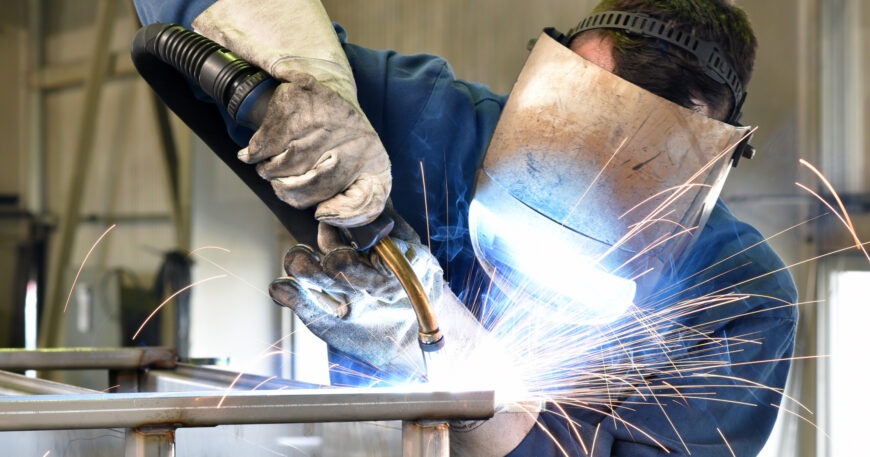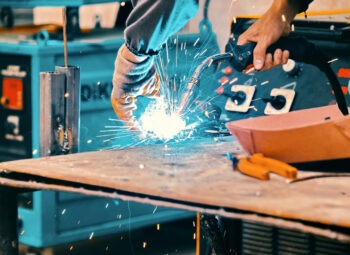Welding has long proven its importance. The sheer number of processes and sub-processes proves that this method of joining components permanently and stably is becoming increasingly important. It is therefore also important to understand what can actually be welded. Which materials are suitable and for which materials is welding not advisable?
The question of whether a material can be welded must be based on various factors. These include the suitability for welding, the welding safety and the weldability. These criteria are based on the materials themselves and the environment.
The material itself must be suitable for welding. It must also be possible to safeguard the welding environment. This means that it must be possible to apply heat without causing defects and deformations.
Which material is not suitable for welding
Some specific material groups can be excluded from welding from the outset. These include all materials that pose a fire or explosion hazard. This means that fusion welding is not possible under any circumstances. However, this also means that in the event of fusion welding, not only can these materials not be processed, they must also be removed from the vicinity of the welding work.
It is also not possible to weld anything that breaks rather than deforms when heat is applied. This is the main reason why metal can be welded. It bends, but it does not break. New welding processes can be used to counteract breaking. This now also makes it possible to join glass and plastics by welding. However, it is essential to ensure that the heat input is low and, above all, precisely controlled.
The welding process
The welding process is also a determining factor in whether a material can be welded or not. Even for metals that can usually all be welded, whether or not they can be joined depends on which welding process is chosen.
When it comes to non-metallic materials, the choice of available processes is even more limited. Glass, for example, can only be joined using laser beam welding. Only friction and ultrasonic welding are suitable for plastics.
The suitability for welding
The suitability for welding refers to the properties of the fabric itself. It must be able to bond inseparably to the same or another fabric with the selected welding variant.
Firstly, this means that a weld can be produced at all. This is followed by the ability to make this weld possible on an ongoing basis and, finally, the weld must be able to withstand future loads.
The welding option
The welding capability refers to the equipment. This must be sufficient to carry out the welding process as required at the selected location. This means that the workplace must be set up correctly for the process.
The welding safety
Welding safety describes the probability of deformations and other faults occurring. This primarily relates to the influence of the environment on the selected welding process.
The properties of the material
The properties of the material play a central role when it comes to determining whether welding is possible at all. It must be ensured that they allow a weld seam of the desired quality. In addition, this weld seam must also be achievable at an economically justifiable cost. This already excludes a number of materials.
In order to achieve precise results, a certain degree of hot formability must also be present. Welders must check the properties of the material accordingly before starting the process.
High mouldability in the warm state is very important. However, it is even more important that the material retains its original strength after cooling. Furthermore, in a fusion welding process, the melting temperatures of the materials, if more than one is involved, should be as similar as possible. If the difference is too great, it will be difficult to achieve the desired result and may even be impossible.
Another important property is thermal conductivity. During fusion welding, heat is introduced into the material to cause it to melt at a specific point. However, thermal conductivity means that the material removes this heat. This means that a high thermal conductivity requires a greater heat input to compensate for the loss. In contrast, a lower thermal conductivity requires less heat, as it remains in the desired location instead of being removed immediately. However, it is important to bear in mind that glass, plastic and other materials with a low thermal conductivity tend to crack or break.
Then there is the chemistry. During fusion welding, the materials are heated up to the melting point. Alternatively, a large amount of force is applied. Both can lead to a change in the chemical composition of the materials in the relevant areas. This change can cause the properties of the materials to deteriorate and thus rule out welding as a joining method.
If steel is to be welded, its suitability depends on the carbon content. If the carbon content is above 0.2%, special precautions must be taken for the process. With such a high carbon content, cracks are likely to form. However, this can be prevented by preheating and stress relief annealing.
If alloys are welded, care must also be taken here. Even a small proportion of alloys can have a considerable effect on the properties of the material. It may therefore be necessary to use other welding processes that are more suitable for a particular alloy.
Which materials are suitable for welding
Typically, metals are suitable for welding. They have the necessary ductility for this. This means that they can be bent under heat instead of simply breaking. This applies to steels as well as ferrous metals and, of course, non-ferrous metals.
Here are the welding processes and the materials that can be processed with them:
| Welding process | Materials |
| Gas fusion welding | Unalloyed steels |
| Manual electric welding | All steels |
| MIG welding | Alloy steels, non-ferrous metals |
| MAG welding | All steels |
| TIG welding | All metals |
| Resistance welding | All metals |
| Plasma welding | All steels, light metals |
| Ultrasonic welding | Metals, plastics |
| Laser beam welding | All steels, light metals, glass |
| Cold pressure welding | Non-ferrous metals, ceramics |
| Friction welding | Metals, plastics |
| Explosive welding | Metals |






